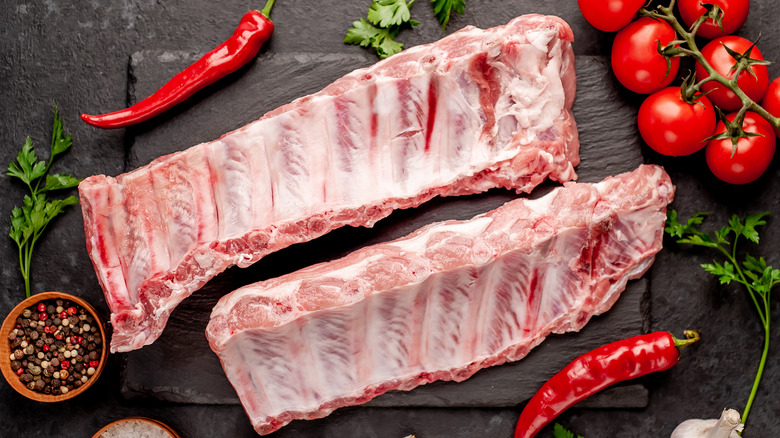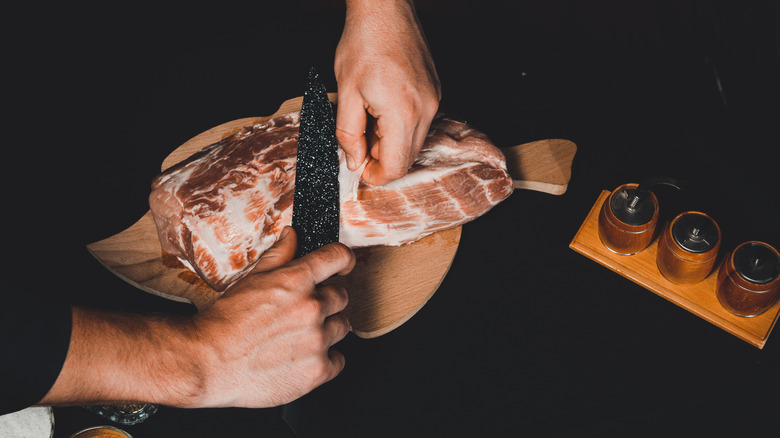What Exactly Is Silver Skin And Should You Remove It?
If you've ever made ribs at home, you may have noticed there's some thin, translucent membrane covering the bone side of the rack. It's easy to identify on ribs — whether beef short ribs or pork spareribs. But it's also present in many other cuts of meat, especially tenderloins (via The Kitchn). This is known as silver skin, a type of connective tissue that should be trimmed away from meat before cooking.
Silver skin, while thin and barely noticeable when raw, becomes chewy when cooked. It's tough enough to ruin the overall texture of the meat it's attached to and can even cause it to curl up. The reason is that silver skin is made up of elastin, a different type of protein than the collagen found in the meat (via The Spruce Eats). The difference is that collagen softens and breaks down when exposed to heat, and elastin does the exact opposite.
How to properly remove silver skin
According to Cuisine at Home, the best way to remove silver skin is to use both your fingers and a knife. Start by removing any surrounding fat, which should be easy to pull off by hand. After detaching the meat's fat, the silver skin should be fully exposed. If you're not working with a rack of ribs, Cuisine at Home recommends looking for a layer that resembles "packing tape." That's the silver skin.
Once identified, you'll gently place the knife underneath the silver skin, above the meat, and slice until you can hold onto a piece of the silver skin with your fingers. Then, continue running the knife under the silver skin until it's fully cut off. It's perfectly fine to leave a little bit of fat behind, but remember that silver skin doesn't melt away like fat does when it cooks. For better results, make sure you remove all traces of it.

